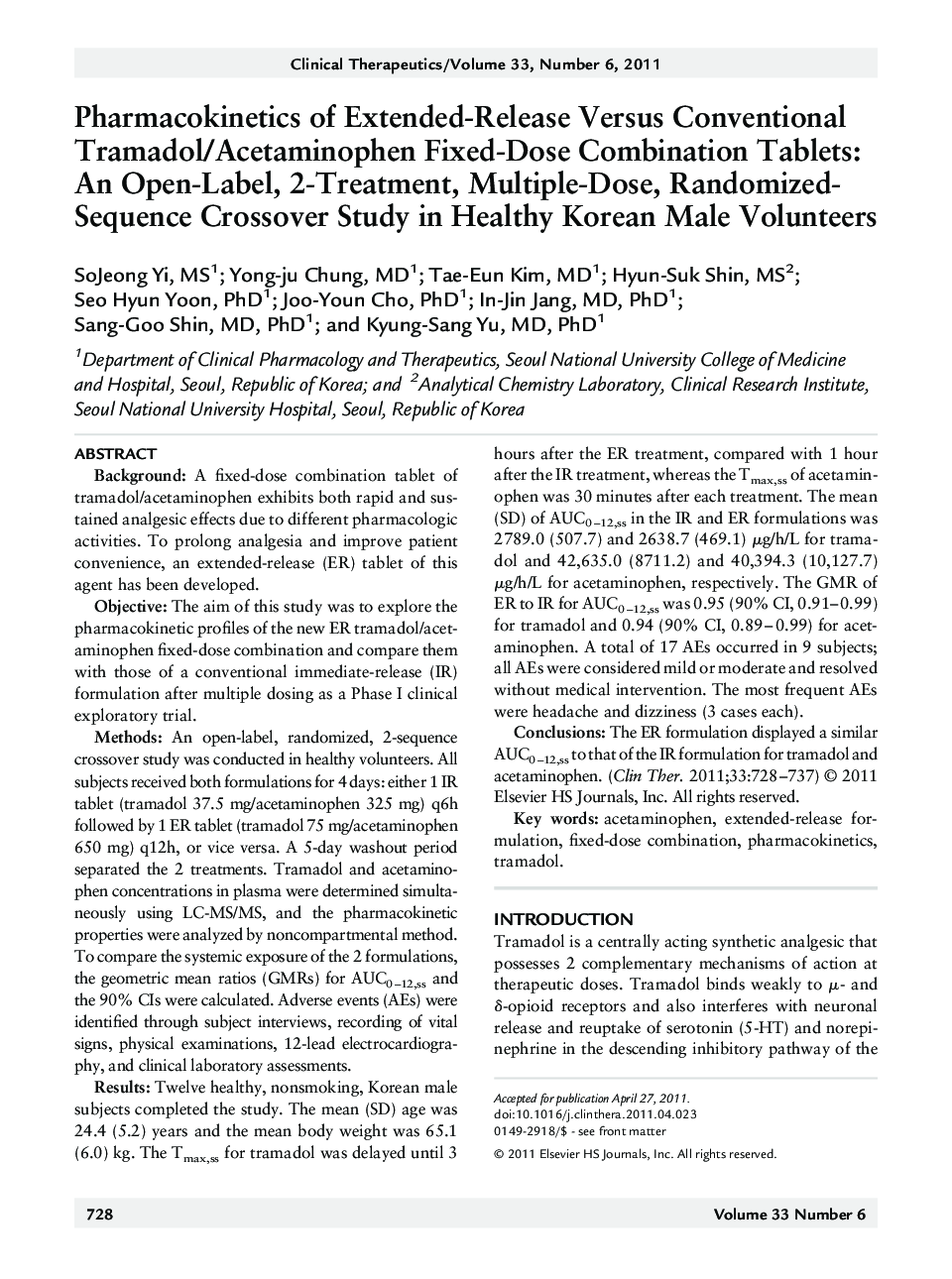| کد مقاله | کد نشریه | سال انتشار | مقاله انگلیسی | نسخه تمام متن |
|---|---|---|---|---|
| 2527550 | 1119925 | 2011 | 10 صفحه PDF | دانلود رایگان |

BackgroundA fixed-dose combination tablet of tramadol/acetaminophen exhibits both rapid and sustained analgesic effects due to different pharmacologic activities. To prolong analgesia and improve patient convenience, an extended-release (ER) tablet of this agent has been developed.ObjectiveThe aim of this study was to explore the pharmacokinetic profiles of the new ER tramadol/acetaminophen fixed-dose combination and compare them with those of a conventional immediate-release (IR) formulation after multiple dosing as a Phase I clinical exploratory trial.MethodsAn open-label, randomized, 2-sequence crossover study was conducted in healthy volunteers. All subjects received both formulations for 4 days: either 1 IR tablet (tramadol 37.5 mg/acetaminophen 325 mg) q6h followed by 1 ER tablet (tramadol 75 mg/acetaminophen 650 mg) q12h, or vice versa. A 5-day washout period separated the 2 treatments. Tramadol and acetaminophen concentrations in plasma were determined simultaneously using LC-MS/MS, and the pharmacokinetic properties were analyzed by noncompartmental method. To compare the systemic exposure of the 2 formulations, the geometric mean ratios (GMRs) for AUC0–12,ss and the 90% CIs were calculated. Adverse events (AEs) were identified through subject interviews, recording of vital signs, physical examinations, 12-lead electrocardiography, and clinical laboratory assessments.ResultsTwelve healthy, nonsmoking, Korean male subjects completed the study. The mean (SD) age was 24.4 (5.2) years and the mean body weight was 65.1 (6.0) kg. The Tmax,ss for tramadol was delayed until 3 hours after the ER treatment, compared with 1 hour after the IR treatment, whereas the Tmax,ss of acetaminophen was 30 minutes after each treatment. The mean (SD) of AUC0–12,ss in the IR and ER formulations was 2789.0 (507.7) and 2638.7 (469.1) µg/h/L for tramadol and 42,635.0 (8711.2) and 40,394.3 (10,127.7) µg/h/L for acetaminophen, respectively. The GMR of ER to IR for AUC0–12,ss was 0.95 (90% CI, 0.91–0.99) for tramadol and 0.94 (90% CI, 0.89–0.99) for acetaminophen. A total of 17 AEs occurred in 9 subjects; all AEs were considered mild or moderate and resolved without medical intervention. The most frequent AEs were headache and dizziness (3 cases each).ConclusionsThe ER formulation displayed a similar AUC0–12,ss to that of the IR formulation for tramadol and acetaminophen.
Journal: Clinical Therapeutics - Volume 33, Issue 6, June 2011, Pages 728–737